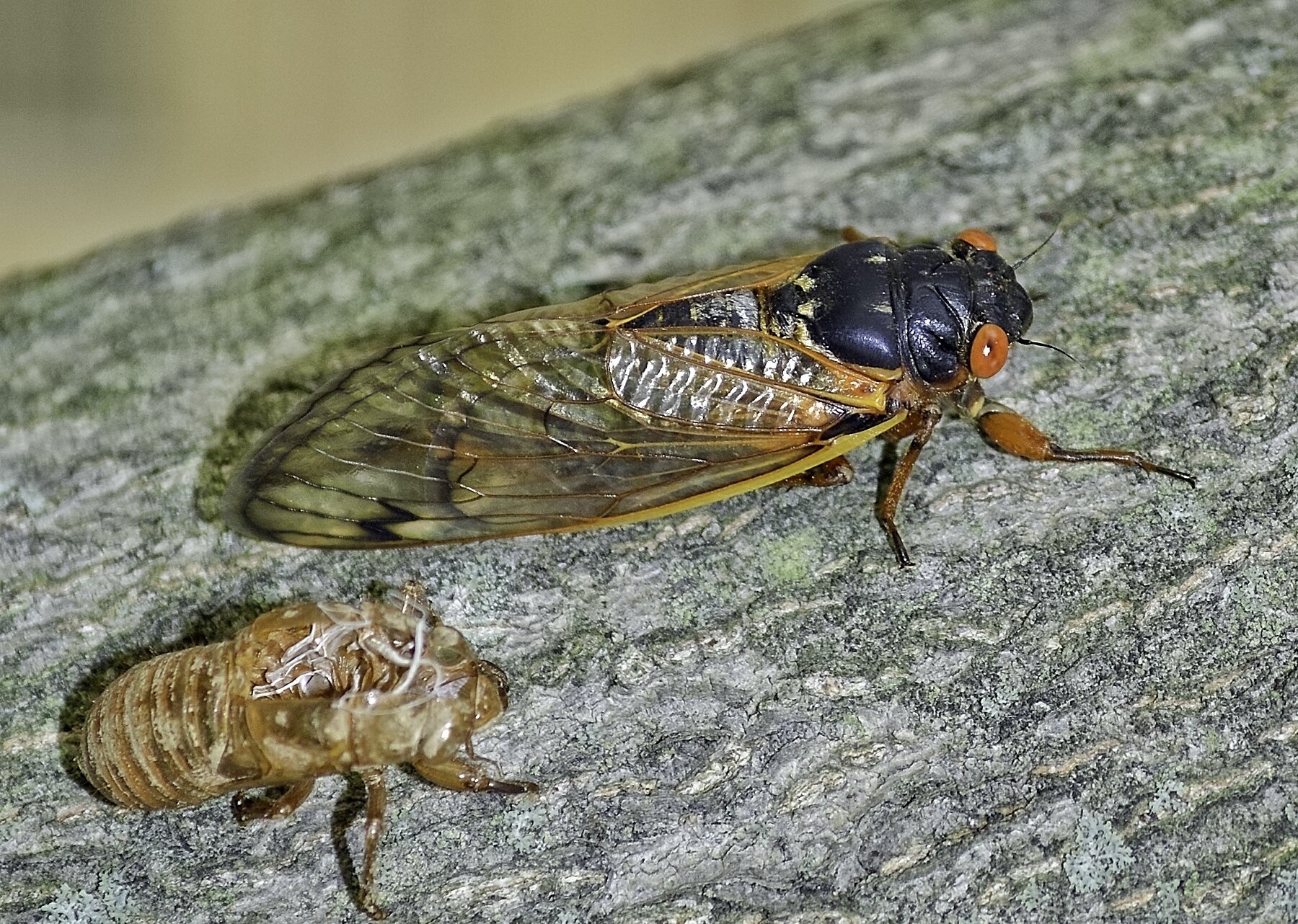Activity: Cicada Safari

Adult cicada and empty shell. Photo credit: Gene Kritsky, Mount St. Joseph University.
During May 2021, something exciting (and noisy) is going to happen. A group of cicadas called Brood X is going to emerge. These cicadas have been underground for 17 years!
Baby cicadas are called nymphs. When the nymphs hatched, they crawled underground. They spent the last 17 years digging tunnels and eating tree roots.
Now these nymphs are coming out of the ground to shed their exoskeletons and develop wings and hard, adult skins. As adults, these cicadas will mate and lay more eggs and the whole cycle begins again.
The cicadas that emerge during the same year are called broods. Brood X was first seen in 1715 in Philadelphia – before Tudor Place was even built.
Scientists study these cicadas to map where the broods emerge and to understand more about their life cycles. One way to help scientists learn about cicadas is by using the Cicada Safari app.
When you see a cicada (or many cicadas!) take a picture of it and mark its location on the map. You can also find out where other people in your neighborhood, state or region have seen cicadas.
Check out the video below for a walk-through of the app.
Now you’re all set to record your cicada observations! Check out past Education at Home posts to learn more about what makes a good observer and to create garden crafts.
This activity is the first of two in a cicada series.




